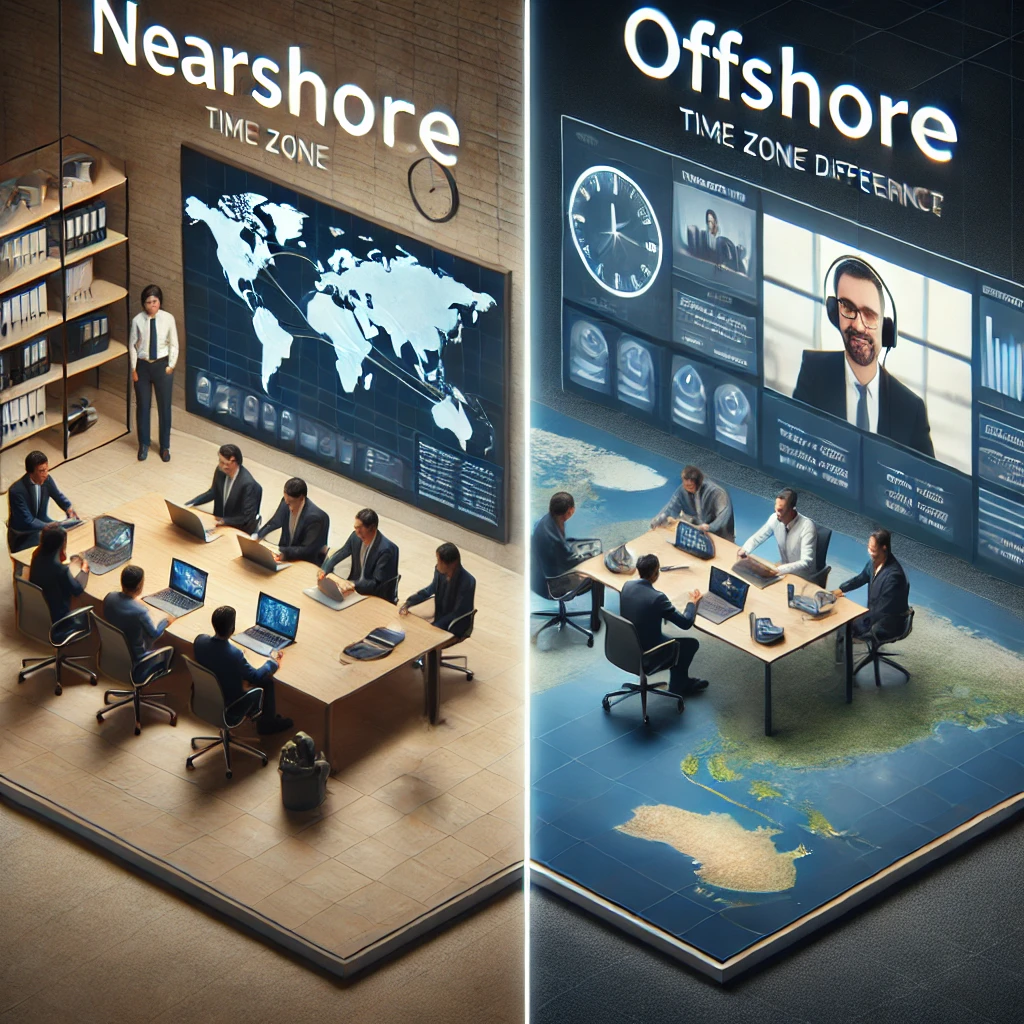
Nearshore VS Offshore Outsourcing - The Best Dev Partner
I like offshore software development for long-term and tight-budget projects. Even both nearshore and offshore outsourcing have their pros and cons.
The current technology-based expansion of businesses drives an ongoing increase in the need for qualified software development partners. The process of choosing between nearshore and offshore outsourcing models becomes similar to traversing an infinite maze. The “best” solution depends on your project requirements and strategic priorities as well as your defined objectives for the long term. An analysis of positive and negative aspects alongside undetected elements will guide you to select the perfect development partner.
Nearshore Outsourcing: Bridging Gaps with Proximity
When organizations choose nearshore outsourcing they establish partnerships with software development teams from neighboring countries and countries near their own location. American-based organizations can establish partnership agreements with development teams working in Mexico or Canada. This model excels because it combines geographic and cultural similarities which provide the benefits below.
-
The geographic proximity allows teams to collaborate in real time because they share matching time zones.
-
Organizations that share work ethics and business practices together with holiday schedules experience diminished operational friction.
-
Project team members can easily meet face-to-face during crucial project milestones because of simpler travel possibilities.
-
Agile workflows operate effectively because of their immediate collaborative communication processes.
The cost of nearshore services runs slightly higher than what offshore providers charge.
Offshore Outsourcing: Tapping into Global Talent Affordably
Businesses utilize offshore outsourcing to build teams in low-cost distant locations which include India, the Philippines, Pakistan, Bangladesh and Eastern European countries. Offshore outsourcing provides companies with a standard option for achieving the following goals:
-
The practice enables substantial labor cost reduction without affecting skill quality levels.
-
Companies can rapidly expand their teams through access to a large group of specialized personnel.
-
The difference in time zones makes it possible to pass work from one shift to another continuously.
Companies face difficulties because language barriers and delayed communication and cultural mismatches create obstacles for progress unless they receive proper management. But with growth of english as international and second most spoken language arround all countries in the world has reduced communications barriers.
Nearshore VS Offshore Outsourcing: A Head-to-Head Comparison
The two models differ across critical decision-making aspects when viewed together.
Cost Efficiency
- Offshore: Unbeatable for tight budgets.
- The nearshore model offers prices between offshore and onshore with reduced expenses from travel expenses and rework requirements.
Communication & Collaboration
- The nearshore model provides instant updates through Slack and Zoom as well as physical meetings.
- Business communication between offshore teams needs established digital tools and teams must maintain overlapping working schedules.
Timezone Alignment
- Daily coordination becomes possible thanks to the 2–4 hour time difference in nearshore projects.
- Urgent decisions encounter significant delays when using offshore development services which span between eight and twelve hours.
Cultural Fit
- The proximity of nearshore business operations reduces cultural misunderstandings because both parties share similar business cultures.
- Offshore: Requires sensitivity training and patience.
Speed to Market
- Agile sprints achieve their best outcomes with rapid feedback loops within nearshore operations.
- Offshore operations typically face time-related workflow delays because of asynchronous work methods.
Pros and Cons at a Glance
| Factor | Nearshore Outsourcing | Offshore Outsourcing |
|---|---|---|
| Cost | Moderate | Highly Affordable |
| Communication | Seamless | Structured & Delayed |
| Timezone | Overlapping Hours | Significant Gaps |
| Cultural Fit | High Alignment | Requires Adaptation |
| Project Speed | Faster Iterations | Dependent on Planning |
How to Choose Your Ideal Development Partner
- Identify your main priority between minimizing costs and requiring quick work and team collaboration.
- Nearshore provides real-time problem-solving for complex projects which benefit from this approach.
- A long-term business solution comes from offshore development whereas nearshore development excels at urgent collaborative tasks.
In The Conclusion Of Nearshore VS Offshore Outsourcing
Choosing between nearshore vs offshore isn’t about choosing best or worst. That all depends upon the best fit. Long-term projects can be handled well with offshore but short-term and extended-budget projects can be done with nearshore software development companies effectively. Offshore outsourcing has a great advantage for American companies as they will have a diverse range of talent from outsourcing countries like India, Bangladesh, and Pakistan. These countries have the best track records in outsourcing not only in IT sectors but in banking sectors as well. BPO and underwriting services are also well-known in these countries. I hope you like the post. Let me know via the contact page about your suggestion and anything you want me to write. you may leave comments below.